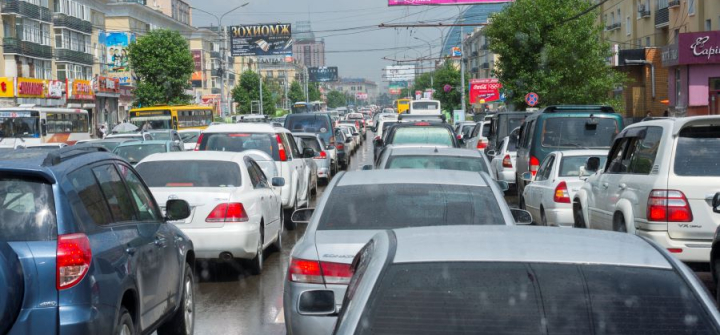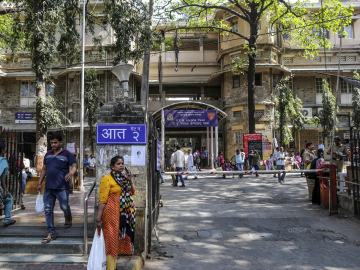When You Live Close to the Hospital, But Can’t Reach It in Time
One day last summer after I returned home to Mongolia, my uncle knocked frantically at the door. He stormed inside, gasping for air.
He had been diagnosed with cancer a few months earlier and was now struggling to breathe. We needed to get him to the hospital right away. Without a car, we did what seemed logical: We called an ambulance.
Knowing too well that it probably wouldn’t arrive soon, my aunts sent me and my cousin to buy some medicine to help him breathe. After running from one pharmacy to another for half an hour, we returned home with the precious purchase. The ambulance came about 15 minutes later—more than 45 minutes after the initial call. A junior doctor and an ambulance driver arrived with the bare minimum: a small bag of medicine and a stretcher. After a quick assessment, we carried him down the stairs of our apartment.
I knew by the writing on the ambulance that it was a donation from Japan. It is not uncommon in low-and middle-income countries to receive equipment from abroad. Unfortunately, there was nothing in the ambulance except 2 benches in the back.
The ride to the hospital was painfully slow, stuck in typical Ulaanbaatar traffic. Other cars wouldn’t let the ambulance pass, despite the siren. Hundreds of cars were wedged on that road, trying to avoid hitting each other, honking their horns in cacophonic chaos. The hospital wasn’t far, about 2 miles away, but seemed unreachable. We probably would have arrived much sooner if my cousin had carried him on his back and ran.
After we finally arrived at the hospital and begged a group of men smoking out front to help us carry him inside, we took a breath of relief.
But our relief was short-lived. That day my uncle passed away at the hospital. He was already so sick.
In the midst of it all, I kept thinking of the many people who need immediate care to survive, such as victims of injuries, who might have lived if only the ambulance arrived earlier, was equipped adequately, and wasn’t stopped by the traffic. In fact, 5.8 million people die each year as a result of injuries—more than the fatalities associated with malaria, tuberculosis and HIV/AIDS combined. Not to mention those who can’t even seek help and go uncounted.
A country may have the best-trained doctors in the world, the most equipped facilities possible, but it is meaningless if patients can’t get to the hospital in time—which happens all too frequently in many developing countries.
My experience occurred in the capital, Ulaanbaatar. In surrounding rural regions, resources are even scarcer; roads may be nonexistent. At least we had an ambulance to call, as ineffective as it was. In many LMICs, commercial cars, volunteers and bystanders often provide prehospital transport and even first aid. This is neither sustainable nor reliable. Instead, health systems should provide support at every point of access to health services, including prehospital care. Otherwise, LMICs will continue to lose 24 million lives annually due to conditions sensitive to emergency care.
The WHO demonstrated support for prehospital care with the passage of a resolution, 72.16, at the 72nd World Health Assembly last May. This resolution underlines the importance of strengthening prehospital emergency care to improve health systems, decrease health inequalities, and contribute to universal health coverage around the world. It also highlights emergency care’s role in meeting multiple targets of Sustainable Development Goal #3, on ensuring good health and well-being to all by 2030.
Among the many challenges associated with the development of quality prehospital care, the lack of financial resources is the most substantial. However, identifying and investing in emergency care delivery models that are sensitive to local settings are more cost-effective than we think. Training laypeople, developing new methods of transportation, and establishing sites with stationed personnel are just a few examples of how we can accomplish this.
The global community needs to support nations committed to establishing such frontline care. It is the foundation for an accessible health system that all other sectors can build upon.
I always believed there is a reason for everything, or perhaps some sort of meaning. That day, I promised my uncle, standing next to his hospital bed, that I would share what I witnessed with the rest of the world. He faintly smiled behind his oxygen mask, raised his thumb up and calmly nodded; telling me one last time that I can do it.
Anudari Zorigtbaatar (@Anudarizorigt) is a medical student at McGill University in Montreal. She has been working with the Centre for Global Surgery at the McGill University Health Centre for the past 2 years in developing a collaboration with Mongolia, her home country, to improve trauma care delivery through research, training, and advocacy. She is currently a research associate at the Program in Global Surgery and Social Change at Harvard Medical School.
Join the tens of thousands of subscribers who rely on Global Health NOW summaries and exclusive articles for the latest public health news. Sign up for our free weekday enewsletter, and please share the link with friends and colleagues: http://www.globalhealthnow.org/subscribe.html
Traffic jam in downtown Ulaanbaatar, Mongolia, July 2012. Image: Wolfgang Kaehler/LightRocket via Getty




